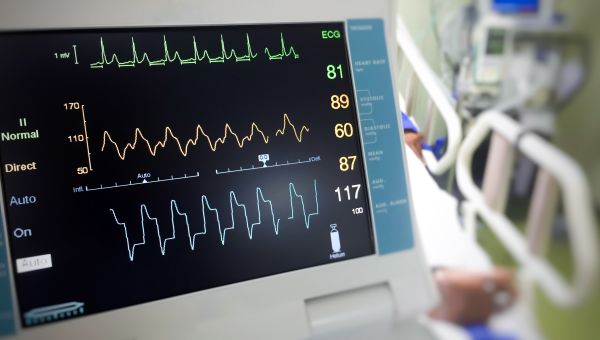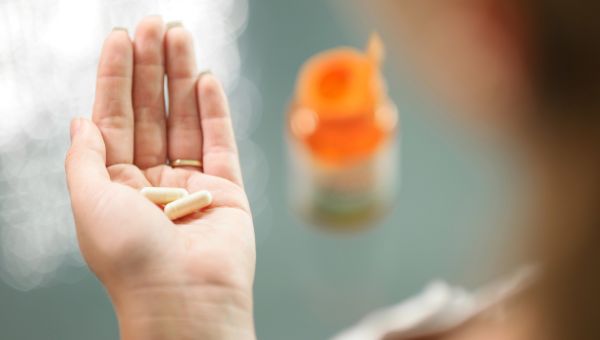Managing AFib: understanding the treatment options
Learn about the lifestyle changes and treatment options that can help keep your heart rhythm steady.
Updated on December 4, 2024

Your heart is a muscle, but it’s also a complex machine. Electrical impulses shoot through your heart, causing it to fill up with blood and then squeeze the blood out to the rest of the body. Ordinarily, the heart works at a steady rhythm. But when these electrical signals that coordinate heartbeats are not working properly, it can result in an abnormal heartbeat, called… Show More
Your heart is a muscle, but it’s also a complex machine. Electrical impulses shoot through your heart, causing it to fill up with blood and then squeeze the blood out to the rest of the body. Ordinarily, the heart works at a steady rhythm. But when these electrical signals that coordinate heartbeats are not working properly, it can result in an abnormal heartbeat, called an arrhythmia.
When you have an arrhythmia, your heart beats too quickly, too slowly, or in an erratic pattern. Arrhythmias can hinder blood flow to the body, damaging organs and contributing to a range of potentially life-threatening health conditions, including cardiac arrest and stroke. Atrial fibrillation, or AFib, is the most common type of arrhythmia, expected to affect more than 12 million people in the United States by 2030.
Show Less
What is AFib?
AFib occurs when the electrical signals that regulate heart rhythm don’t move through the heart in their usual way. This causes the heart’s top chambers—called the atria—to flutter or quiver. As a result, blood doesn’t fully leave the upper chambers, causing it to pool. When blood pools it can form… Show More
AFib occurs when the electrical signals that regulate heart rhythm don’t move through the heart in their usual way. This causes the heart’s top chambers—called the atria—to flutter or quiver. As a result, blood doesn’t fully leave the upper chambers, causing it to pool. When blood pools it can form a clot. A clot can exit the heart and block blood flow to the brain, causing a potentially deadly stroke. The good news is that AFib can be managed with a variety of lifestyle and medical approaches.
Show Less
Lifestyle changes and medication
AFib can be caused by a variety of things, including medical issues such as high blood pressure, sleep apnea, or viral infections. Lifestyle habits can trigger it, and many people are able to identify at least some of their AFib triggers. These may include heavy drinking of either caffeine or… Show More
AFib can be caused by a variety of things, including medical issues such as high blood pressure, sleep apnea, or viral infections. Lifestyle habits can trigger it, and many people are able to identify at least some of their AFib triggers. These may include heavy drinking of either caffeine or alcohol, drug use, smoking, and stimulants, including over-the-counter medicines for treating colds and allergies. Managing these triggers can help people with AFib reduce the frequency of their episodes. But AFib may be hard to predict, as triggers can vary from one person to the next.
If you have AFib, your healthcare provider (HCP) may recommend that you make some lifestyle changes to help control your condition and lower your risk for high blood pressure and heart disease. These changes may include:
- Maintaining a healthy weight
- Avoiding foods high in salt or saturated fat
- Quitting smoking
- Getting regular exercise as you are able
- Adopting a heart-healthy diet
- Taking steps to ease stress
- Getting adequate sleep, or about seven to nine hours each night
People with early AFib may also be prescribed medication as an early treatment. Treating Afib with medication is a three-pronged approach. There are drugs to slow the heart rate, drugs to regulate the electrical rhythm, and drugs to stop the blood from clotting and potentially causing a stroke.
“A lot of people can go years with just medication,” says David Affleck, MD, a cardiothoracic surgeon in Salt Lake City, Utah. “The downside to this is you’re not changing the triggers that cause the Afib. You will probably need medication for the rest of your life.”
Show Less
Cardioversion
There are two types of procedures used to restore a normal heart rhythm. They’re called drug cardioversion and electrical cardioversion.
Drug cardioversion, also called chemical cardioversion, involves drugs being administered through an IV or taken by mouth. These drugs work to correct the heart… Show More
There are two types of procedures used to restore a normal heart rhythm. They’re called drug cardioversion and electrical cardioversion.
Drug cardioversion, also called chemical cardioversion, involves drugs being administered through an IV or taken by mouth. These drugs work to correct the heart rhythm. Drug cardioversion is often advised as a first course of action because it doesn’t require sedation. It can also be a preliminary treatment to an electrical cardioversion, as it can raise the chance of success.
With electrical cardioversion, patients are given mild anesthesia before receiving electric shocks on the outside of their chest with paddles or patches. It’s similar to defibrillation but much lower levels of electricity are used. This shock can help “reset” the heart, restoring a normal heartbeat. Afterward, preventive medicines might be necessary.
In some cases, such as when a patient has a slow heart rhythm, a pacemaker may be used to help manage AFib. A pacemaker is a device that’s implanted in the body to send steady electrical signals to the heart to help it maintain a normal rhythm. It’s important to understand that while a pacemaker might make people feel better, it will not cure AFib. Some medications for AFib could also slow heart rate, which is another case when an AFib patient might benefit from a pacemaker.
Show Less
Catheter ablation
When AFib can’t be controlled by lifestyle changes, medication, or cardioversion, a procedure known as catheter ablation might help. This is a minimally invasive procedure that uses energy, such as radiofrequency, laser, or cryotherapy (cold therapy), to kill the cells that create the irregular… Show More
When AFib can’t be controlled by lifestyle changes, medication, or cardioversion, a procedure known as catheter ablation might help. This is a minimally invasive procedure that uses energy, such as radiofrequency, laser, or cryotherapy (cold therapy), to kill the cells that create the irregular heartbeat.
For a catheter ablation procedure, you will typically see a electrophysiologist. That’s a special cardiologist (heart doctor) trained in heart rhythm issues. They will insert a long, thin tube known as a catheter into a blood vessel in the groin. Then they will guide it up to the area inside the heart that’s causing the irregular heartbeats. The end of the catheter produces extreme cold or heat to destroy the heart tissue that’s triggering the fast and irregular heartbeats.
The procedure usually has a short recovery period, and it can have a success rate of up to 90 percent. However, in some cases, AFib may return following catheter ablation, and so it may need to be performed more than once.
Show Less
Surgical ablation
Surgical ablation, also known as a maze procedure, may be recommended for different types of patients. These include people who need heart surgery for another reason, those with AFib that isn’t controlled by medication and less invasive procedures, or those with a history of stroke or other blood… Show More
Surgical ablation, also known as a maze procedure, may be recommended for different types of patients. These include people who need heart surgery for another reason, those with AFib that isn’t controlled by medication and less invasive procedures, or those with a history of stroke or other blood clots.
In a surgical ablation, instead of using a catheter, a surgeon either opens up the chest or makes small incisions by the armpits (referred to as a “mini-maze”). The full version is a big operation. “You’re opening the sternum and deflating the lungs, and there’s a long recovery,” explains Dr. Affleck. The mini-maze usually requires less recovery time and carries less risk of infections.
Surgical ablation is a more invasive procedure than catheter ablation, but it’s highly effective for certain patients. “It has the highest cure rate, the lowest recurrence rate, and the lowest long-term stroke rate,” says Affleck.
Show Less
Hybrid ablation
A hybrid ablation is one in which a cardiac electrophysiologist and the surgeon work together. With catheter ablation, it takes special skill to burn the back wall of the heart from the inside without damaging other nearby structures, such as the aorta (the main blood vessel leading from the heart… Show More
A hybrid ablation is one in which a cardiac electrophysiologist and the surgeon work together. With catheter ablation, it takes special skill to burn the back wall of the heart from the inside without damaging other nearby structures, such as the aorta (the main blood vessel leading from the heart to the body) or the esophagus (the digestive tube leading from the mouth to the stomach). A surgical ablation, meanwhile, is a difficult operation with a long recovery time. A hybrid approach can solve both problems.
“Catheter ablation is one technique, surgical ablation is one technique, hybrid ablation is both working together,” Affleck says. “I do what’s difficult for a catheter to do and the electrophysiologist does the burns that I find difficult.”
A hybrid ablation doesn’t require open-heart surgery; instead, small incisions are made on each side of the chest. It can reduce hospital stays and recovery time by half, compared to open-heart surgical ablation.
Show Less
Convergent ablation
Even minimally invasive ablation surgery requires the surgeon to deflate each lung to treat both sides of the heart. That’s too intense for some patients, especially those who are obese or whose lungs already don’t work well.
In these cases, a convergent ablation may be performed. In this… Show More
Even minimally invasive ablation surgery requires the surgeon to deflate each lung to treat both sides of the heart. That’s too intense for some patients, especially those who are obese or whose lungs already don’t work well.
In these cases, a convergent ablation may be performed. In this procedure, the surgeon enters the body through the abdomen, eliminating the need to deflate the lungs. There is also only a single incision needed rather than several.
Show Less
National Heart, Lung, and Blood Institute. What Is An Arrhythmia? Page last updated March 24, 2022.
Centers for Disease Control and Prevention. Atrial Fibrillation. Page last reviewed October 14, 2022.
Mayo Clinic. Atrial Fibrillation. July 26, 2023.
Johns Hopkins Medicine. Chemical Cardioversion. Page accessed February 16, 2024.
Johns Hopkins Medicine. Pacemaker Insertion. Page accessed February 16, 2024.
American Heart Association. Surgical Procedures for Atrial Fibrillation.
National Heart, Lung, and Blood Institute. Heart Treatments. Page last updated March 24, 2022.
Johns Hopkins Medicine. Catheter Ablation. Page accessed February 16, 2024.
Johns Hopkins Medicine. AFib Surgery and Maze Procedure. Page accessed February 16, 2024.
Lahey Hospital and Medical Center. Mini-Maze Procedure—Minimally Invasive Surgery. Page last updated July 20, 2021.
Stanford Medicine. Hybrid Cardiac Ablation & Minimally Invasive Cox Maze Procedure. Page accessed February 16, 2024.
StopAfib.org (a division of the American Foundation for Women’s Health). Hybrid Ablation Procedures for Atrial Fibrillation. Page accessed February 16, 2024.
More On


video

article

slideshow


video


video
